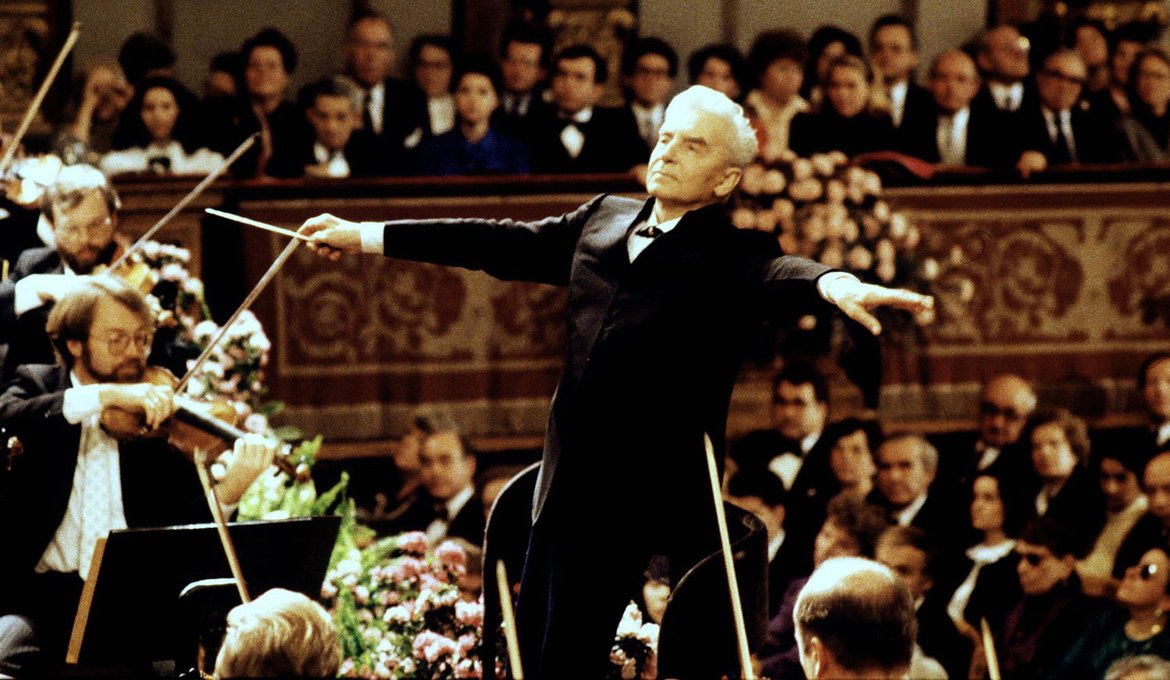The hotly anticipated blockbuster of Johannes Vermeer, which reunites 28 out of 37 known paintings by the mysterious 17th-century Dutch master, has finally opened.
But despite the Rijksmuseum’s to ensure that this once-in-a-lifetime exhibition can accommodate as many visitors as possible, many art lovers have been left disappointed. Within a matter of days after the opening, all available tickets were sold out. Before “Vermeer” opened to the public on February 10, the museum already sold more than 200,000 tickets and had extended its opening hours to 10 p.m. on Thursdays to Saturdays and also extended the running time of the show.
Some Vermeer enthusiasts vented their frustration on social media. The Rijksmuseum reacted to public’s overwhelming response promptly by squeezing out more tickets after the opening “without affecting the experience we wish our visitors to have,” a museum spokesperson told Artnet News. The second round of tickets released is now also sold-out. “[The] Rijksmuseum will continue to monitor our audience pattern carefully—and make necessary adjustments when possible to enable as many visitors to see the exhibition as possible,” the museum spokesperson added.
Given that chances of getting tickets to the show are slim, we are bringing you a walkthrough of the exhibition, including every single artwork featured.
Venturing into Town
Vermeer was born, raised, and died in Delft. Two paintings depicting the scenes of his hometown are featured in this section.
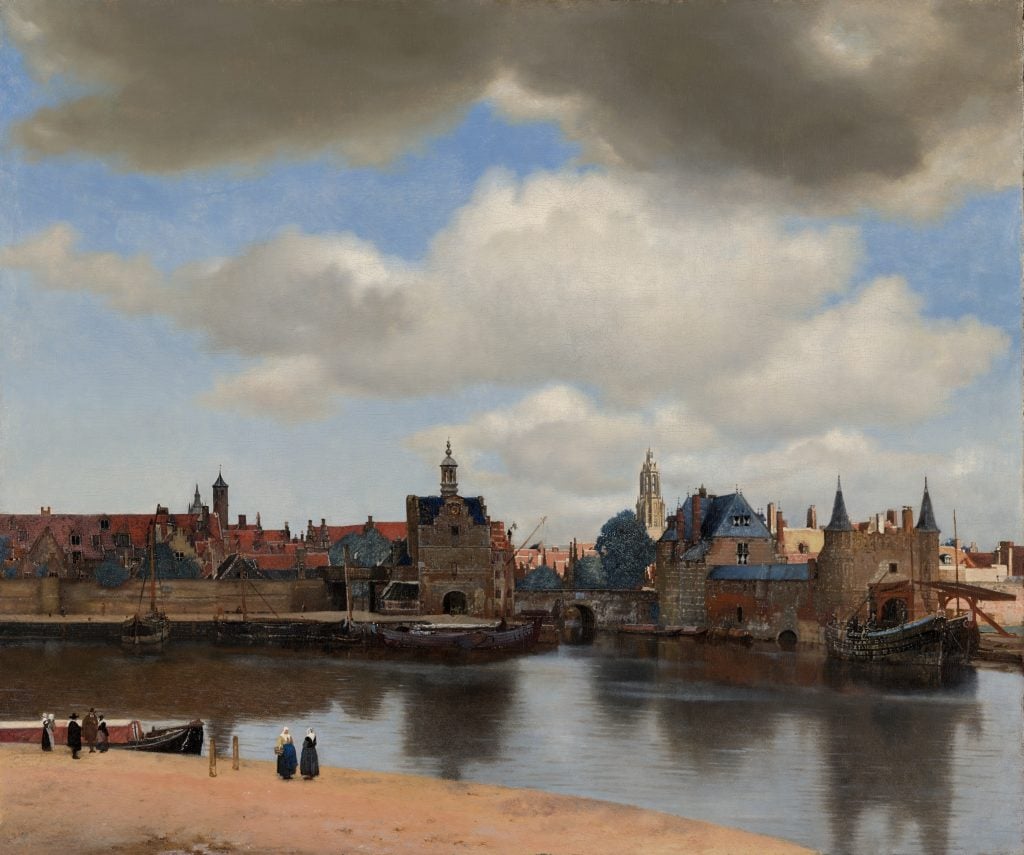
Johannes Vermeer, View of Delft (1660-61), oil on canvas. Mauritshuis, The Hague.

Johannes Vermeer, View of Houses in Delft, also known as The Little Street (1658-59) oil on canvas. Rijksmuseum, Amsterdam. Gift of H.W.A. Deterding, London.
Early Ambitions
This section features four large paintings that are Vermeer’s earliest known works, executed in the artist’s early 20s. Vermeer was born into the times of religious conflicts. A Reformed Protestant by birth, the artist married Catharina Bolnes, a Catholic. The religious themes play a dominant role in works created during this period. The Procuress (1656), however, marks a turning point of Vermeer’s ambition as a painter, as he later chose to focus on capturing everyday life in his works.
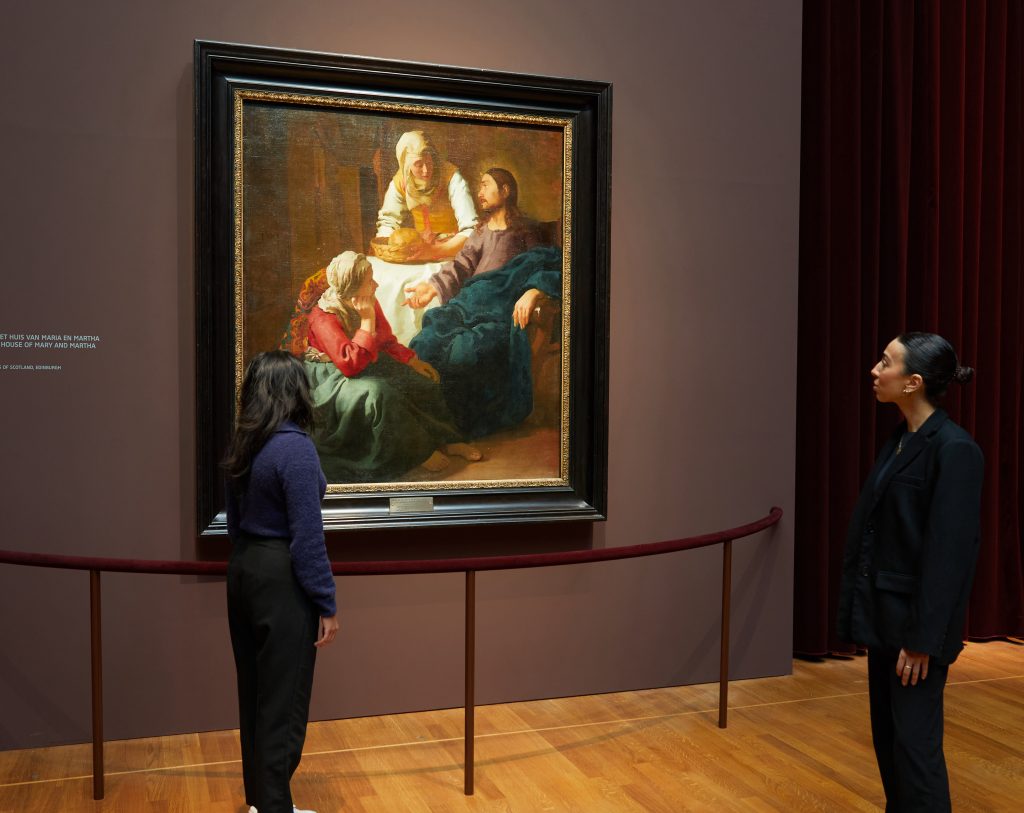
Christ in the House of Mary and Martha, Johannes Vermeer, ca. 1655. National Gallery of Scotland, Edinburgh.

Diana and her Companions, Johannes Vermeer, c. 1653-1654. Mauritshuis, Den Haag.

Saint Praxedis, Johannes Vermeer, ca. 1655. National Museum of Western Art, Tokyo.
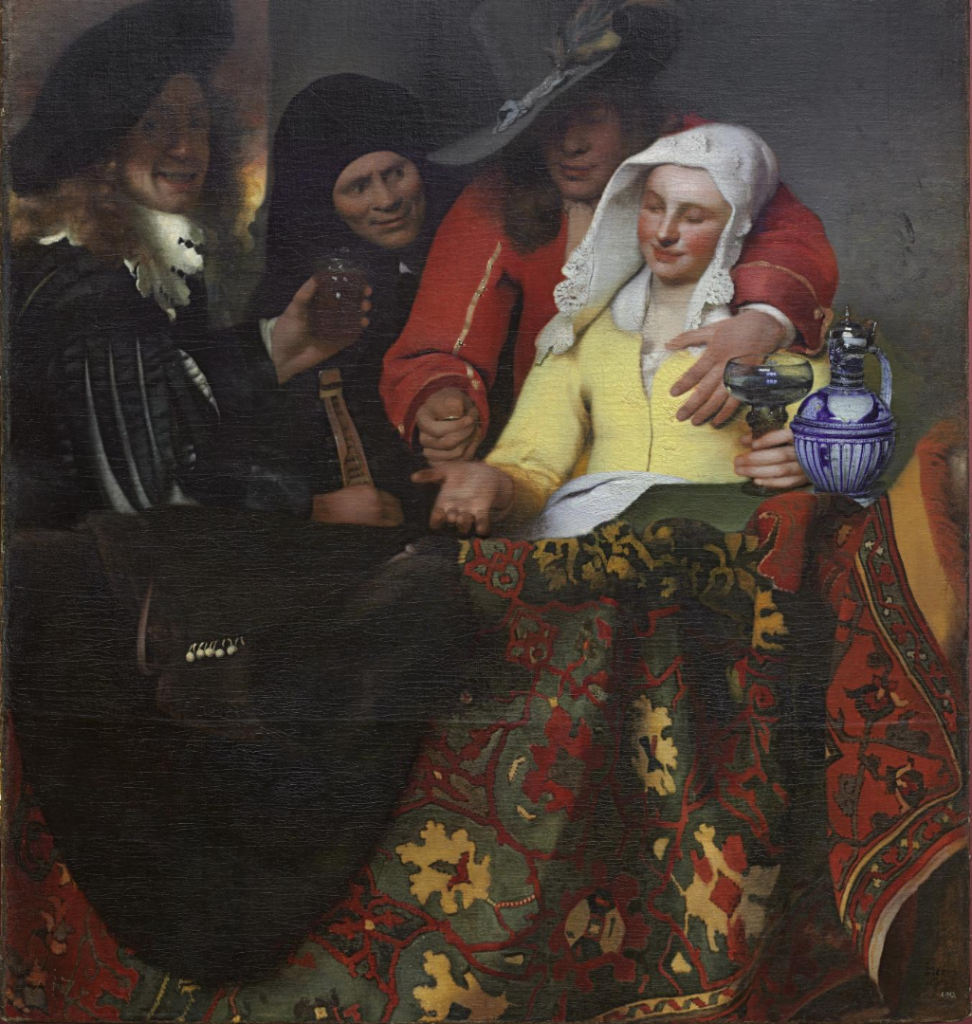
The Procuress, Johannes Vermeer, ca. 1656. Gemäldegalerie Alte Meister, Dresden.
First Interiors
The two paintings featured in this section depict what seems to be the mundane, everyday life, but art historians suggest that these two paintings illustrate how Vermeer mastered his skill in portraying a pictorial space on a flat surface, creating depth and composition with a single vanishing point.
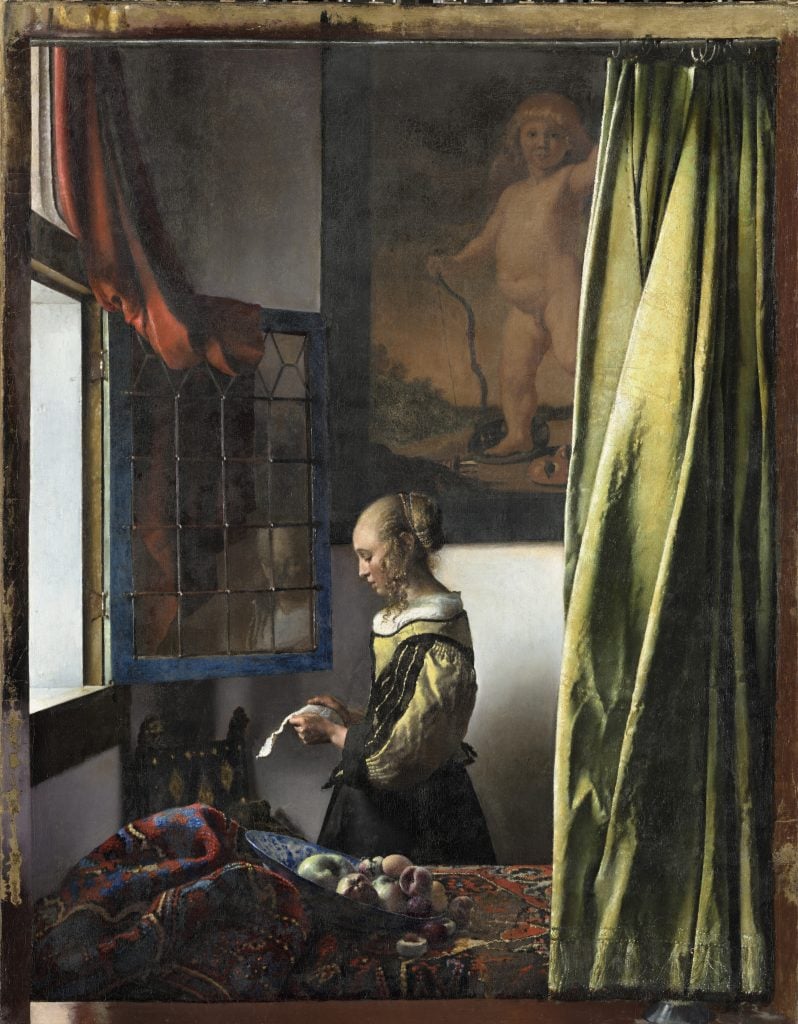
Girl Reading a Letter at an Open Window, Johannes Vermeer, 1657-58, oil on canvas. Gemäldegalerie Alte Meister, Dresden.

The Milkmaid, Johannes Vermeer, 1658-59, oil on canvas. Rijksmuseum, Amsterdam. Purchased with the support of the Vereniging Rembrandt.
Gazing Out
This section identifies three works related to the windows, exploring how the inner world is connected to that of the outside, by either opening the windows or having someone looking out the window.
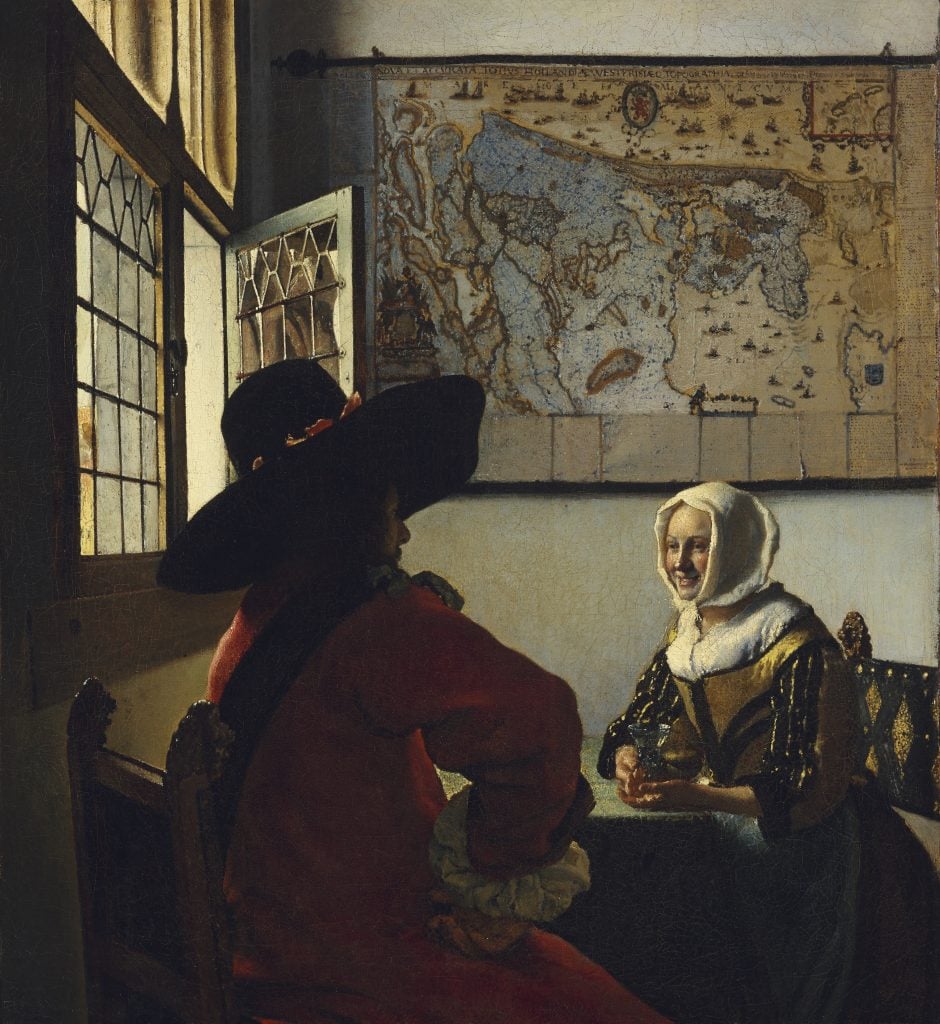
Officer and Laughing Girl, Johannes Vermeer, 1657-58, oil on canvas. The Frick Collection, New York. Photo: Joseph Coscia Jr.
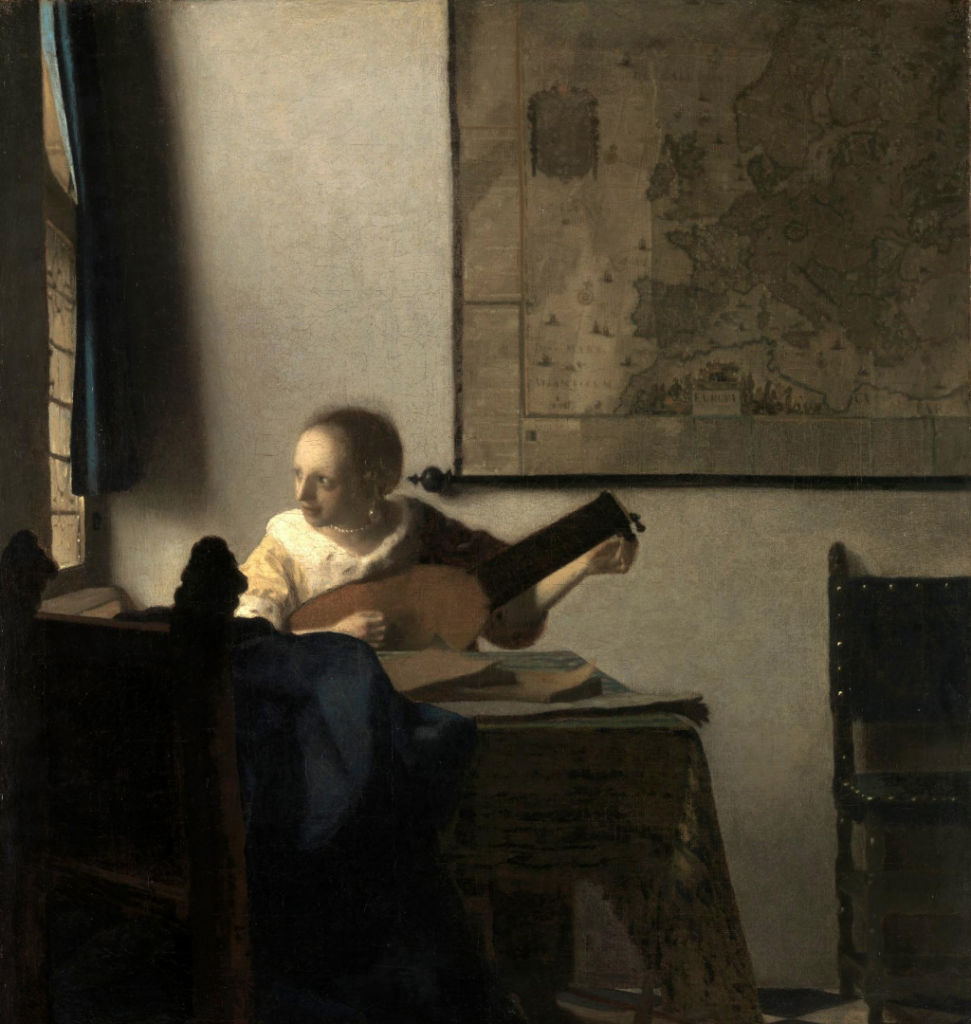
Woman with a Lute, Johannes Vermeer, ca. 1662-63. The Metropolitan Museum of Art, New York City.
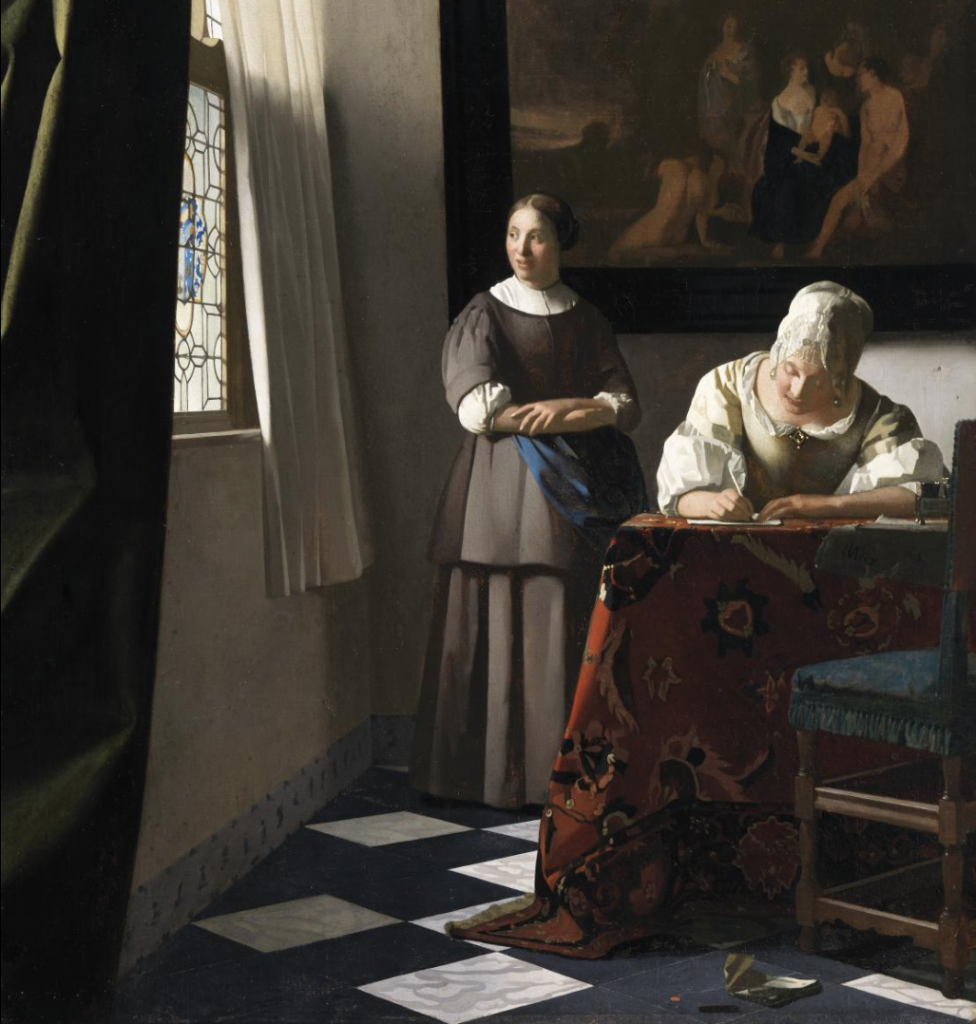
Lady Writing with Her Maid, Johannes Vermeer, ca. 1670-1671. National Gallery of Ireland, Dublin.
Up Close
Is she looking at you or not? This group of paintings depicts women with mysterious gazes. But not everyone of them is engaging with the viewer. The Lacemaker, for example, keeps her head down on her work, but Vermeer brought the viewer so close to her that we can see the threads in her hands.
This section also includes the controversial Girl with a Flute, which has caused a debate on whether it was a genuine work of Vermeer.

Girl with a Flute, Johannes Vermeer, ca. 1669-1675. National Gallery of Art, Washington D.C.
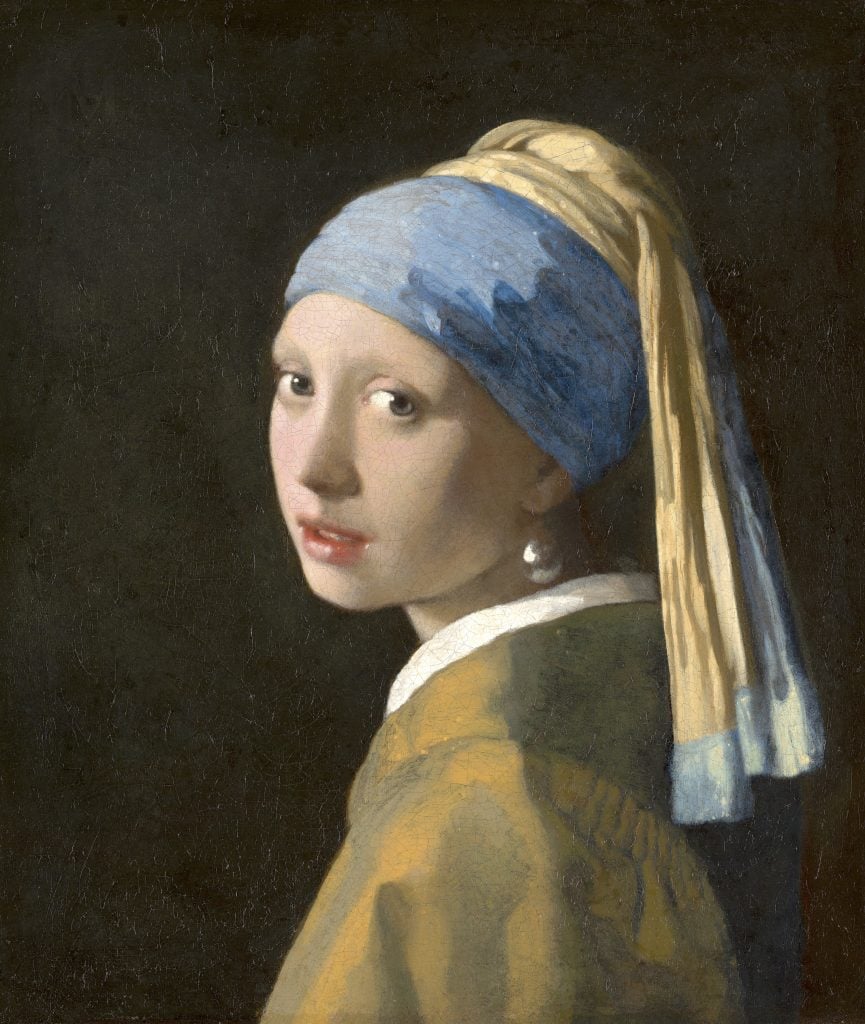
Girl with a Pearl Earring, 1664–67, oil on canvas. Mauritshuis, The Hague. Bequest of Arnoldus Andries des Tombe, The Hague.
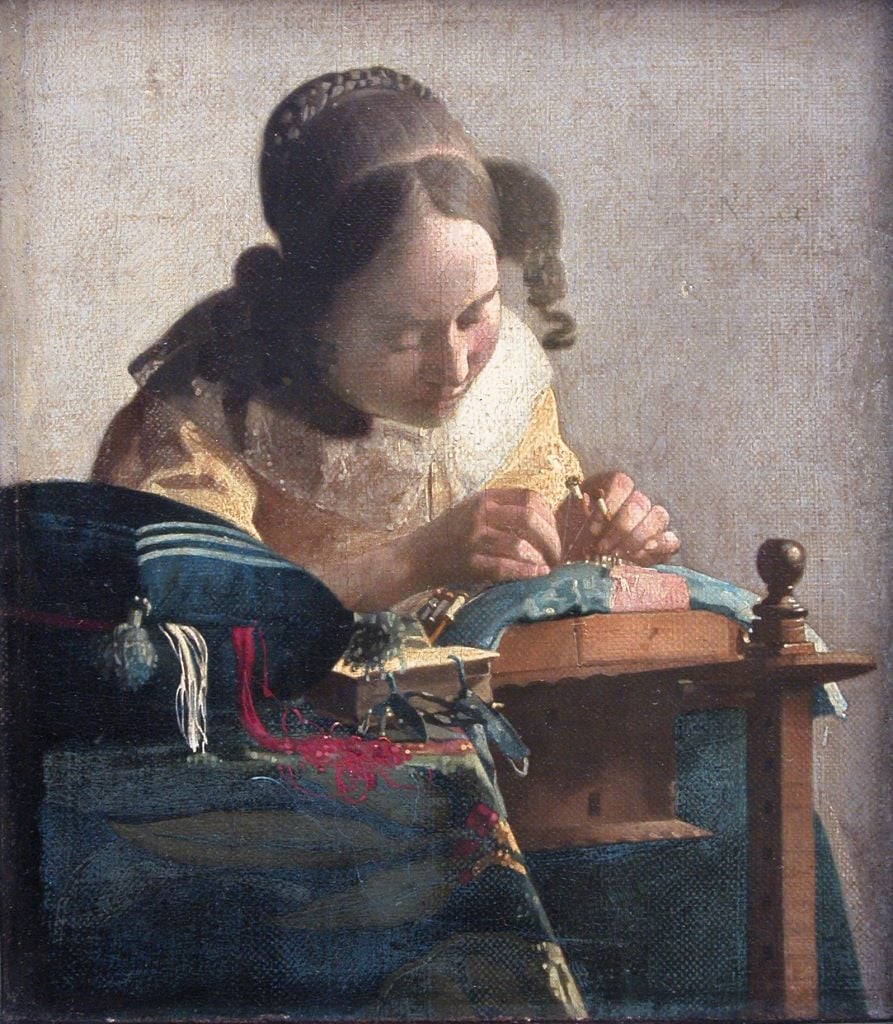
The Lacemaker, Johannes Vermeer, 1666–68, oil on canvas mounted on panel. Musée du Louvre, Paris.
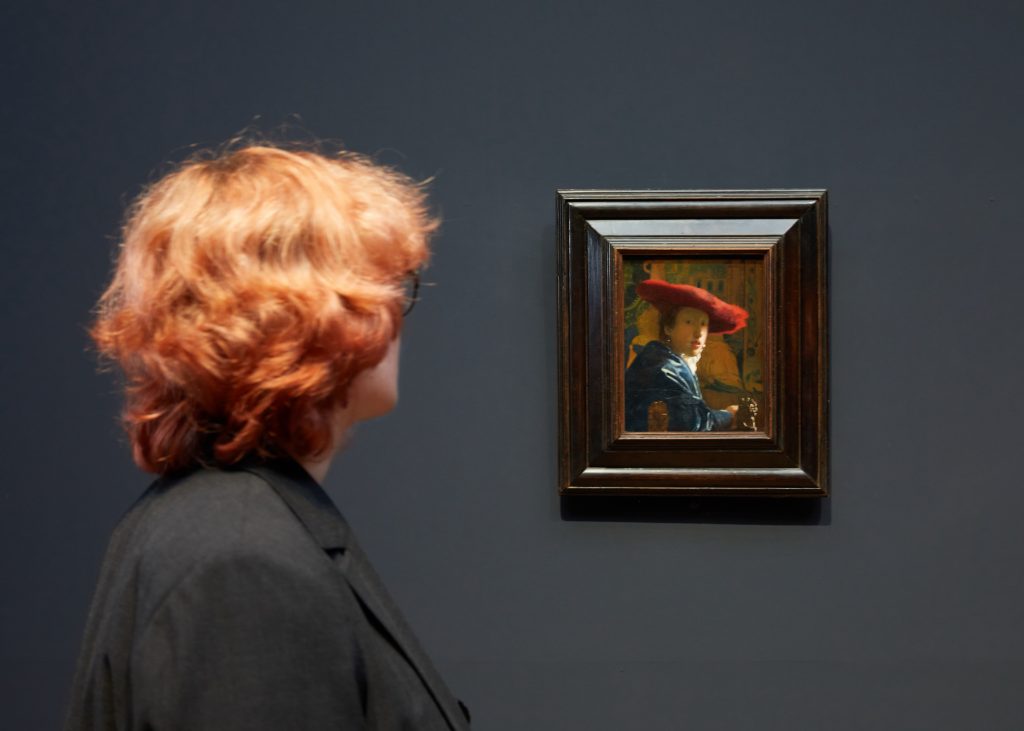
Girl with a Red Hat, Johannes Vermeer, ca. 1665. National Gallery of Art, Washington D.C. ‘Vermeer’ exhibition. Photo Rijksmuseum/ Henk Wildschut.
Musical Appeal
Music has a strong presence in Vermeer’s modest oeuvre, as highlighted in this section. Curiously, the women in both paintings are looking at the viewer, as if their music-making was interrupted.
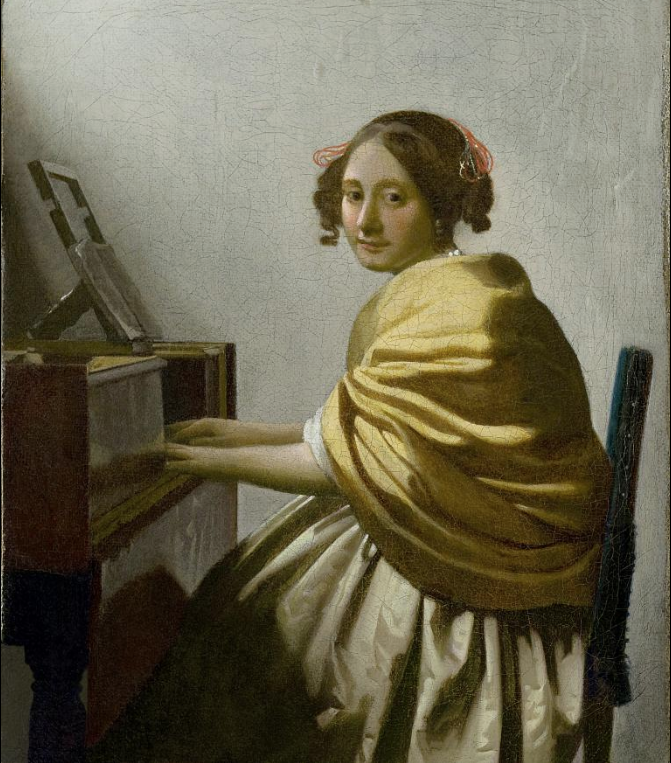
Young Woman Seated at a Virginal, Johannes Vermeer, ca. 1670-1672. Leiden Collection, New York.
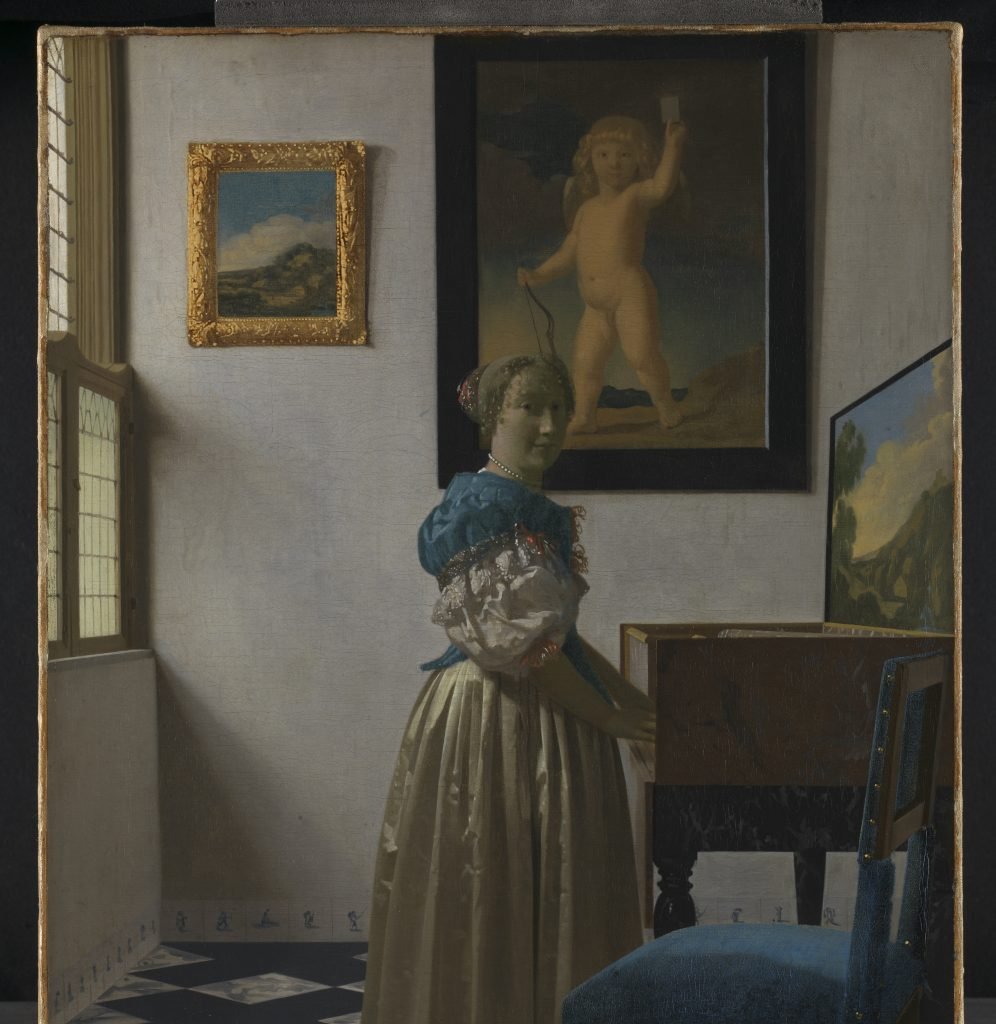
A Young Woman standing at a Virginal, Johannes Vermeer, 1670–72, oil on canvas. The National Gallery, London
Letters From the Outside World
Widely seen as one of the most intriguing paintings by Vermeer, The Love Letter maintains a distance between the two women and the viewer, who is positioned as if taking a peep from an adjacent room. The women’s subtle yet dramatic facial expressions against the backdrop of the painting of the seascape on the wall, suggest a story behind the letter in the hands of the lady in the yellow robe.
Besides music, letters like a supporting character in Vermeer’s paintings. Characters are often depicted writing, reading, or receiving letters, suggesting life beyond the painting.
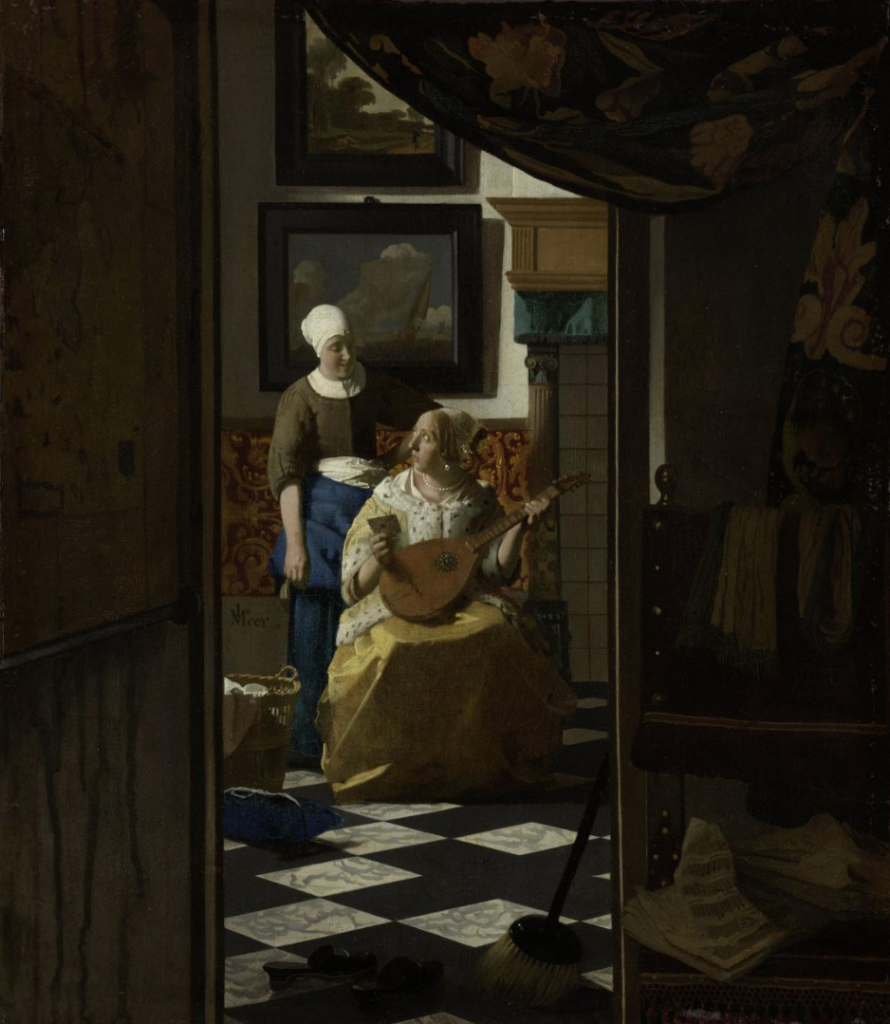
The Love Letter, Johannes Vermeer, ca. 1669 – ca. 1670. Rijksmuseum, Amsterdam.

Woman in Blue Reading a Letter, Johannes Vermeer, 1662-64, oil on canvas. Rijksmuseum, Amsterdam. On loan from the City of Amsterdam (A. van der Hoop Bequest).
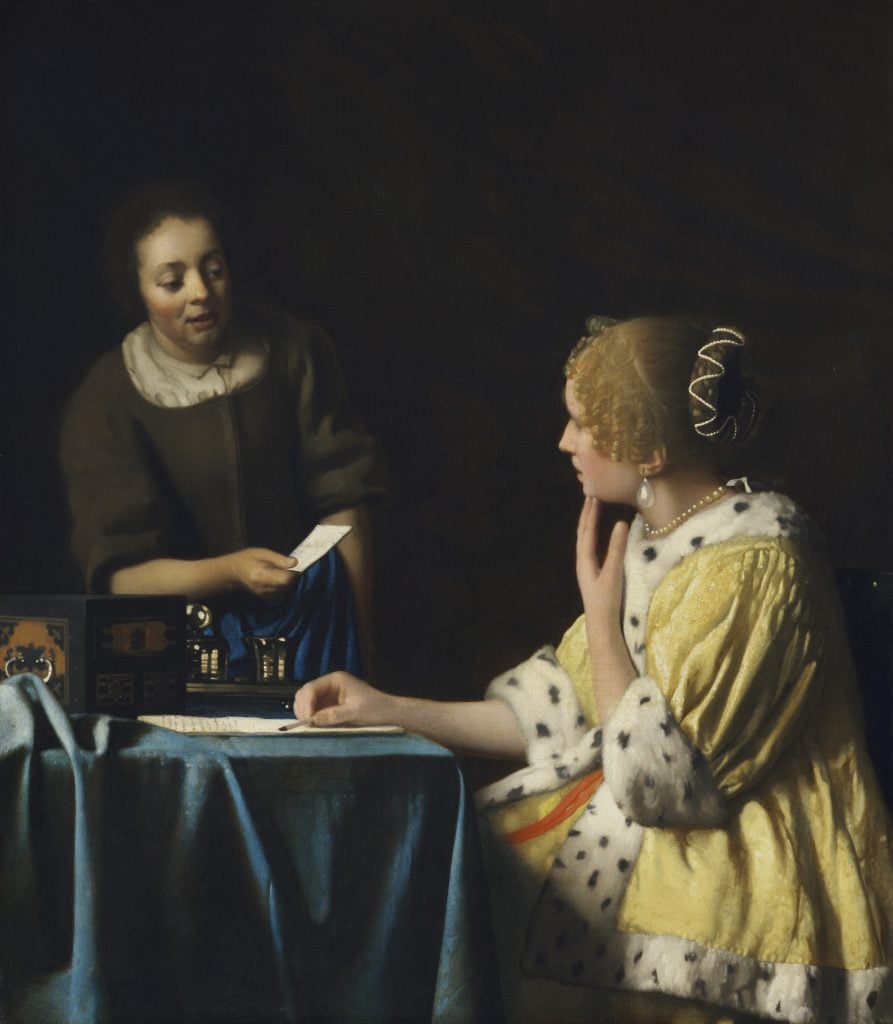
Mistress and Maid, Johannes Vermeer, c. 1665-67, oil on canvas. The Frick Collection, New York. Photo: Joseph Coscia Jr.
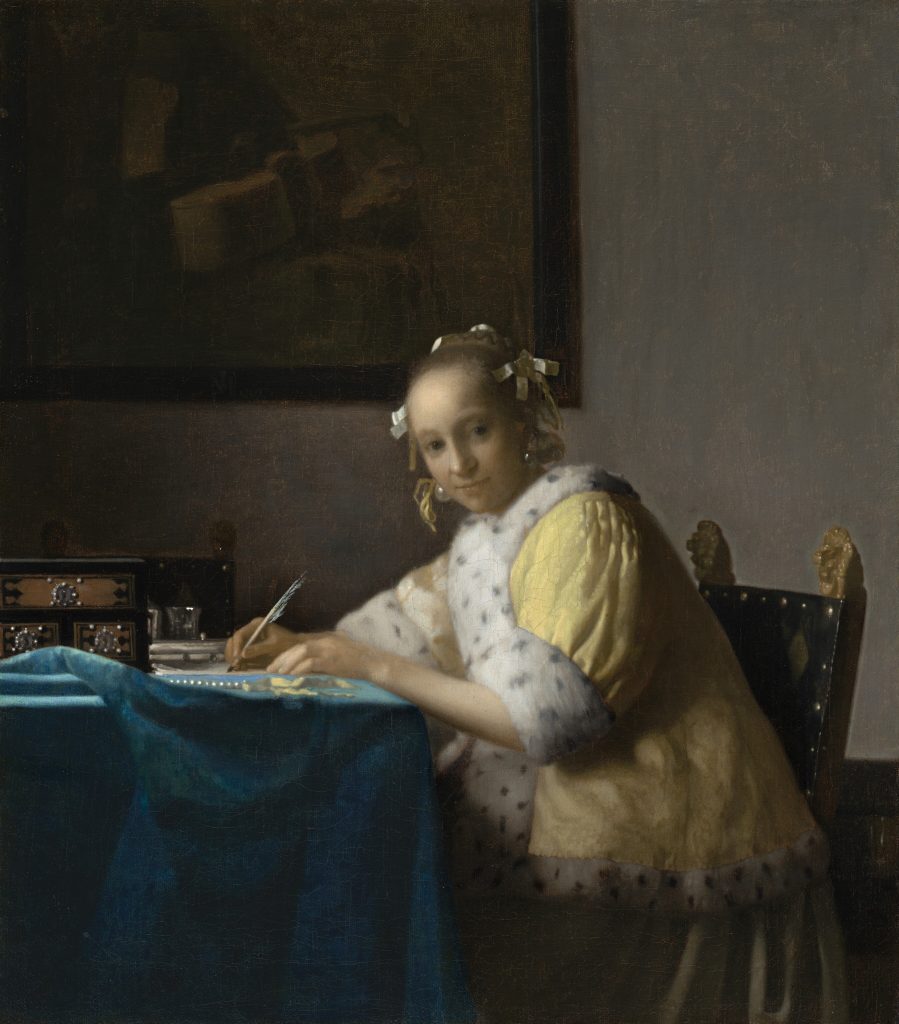
A Lady Writing, Johannes Vermeer, 1664-67, oil on canvas. National Gallery of Art, Washington. Gift of Harry Waldron Havemeyer and Horace Havemeyer Jr., in memory of their father, Horace Havemeyer
Gentlemen Callers
The gentlemen in Vermeer’s paintings have a curious role to play, as seen in these two paintings below. Still donning a cloak or a cape, these men appear to have just entered the room from the outside, interrupting whatever the women are doing, whether playing the music or taking a sip of wine.
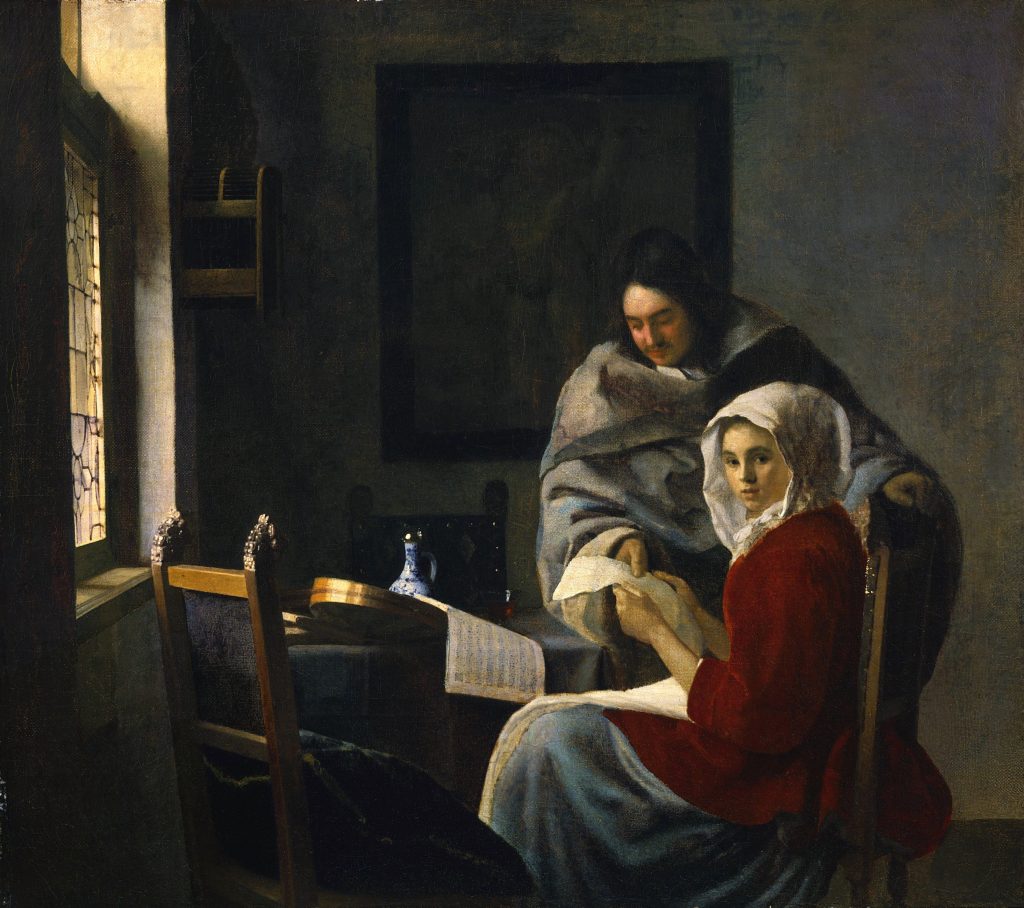
Girl Interrupted at Her Music, Johannes Vermeer,. 1659–61, oil on canvas. The Frick Collection. New York. Photo: Joseph Coscia Jr

The Glass of Wine, Johannes Vermeer, c. 1659-61, oil on canvas. Staatliche Museen zu Berlin – Gemäldegalerie
View of the World
Science is a key subject in Vermeer’s paintings, as seen in The Geographer. Another similar one is The Astronomer, which is in the collection of Louvre but not in this show in Amsterdam. Maps frequently recur.
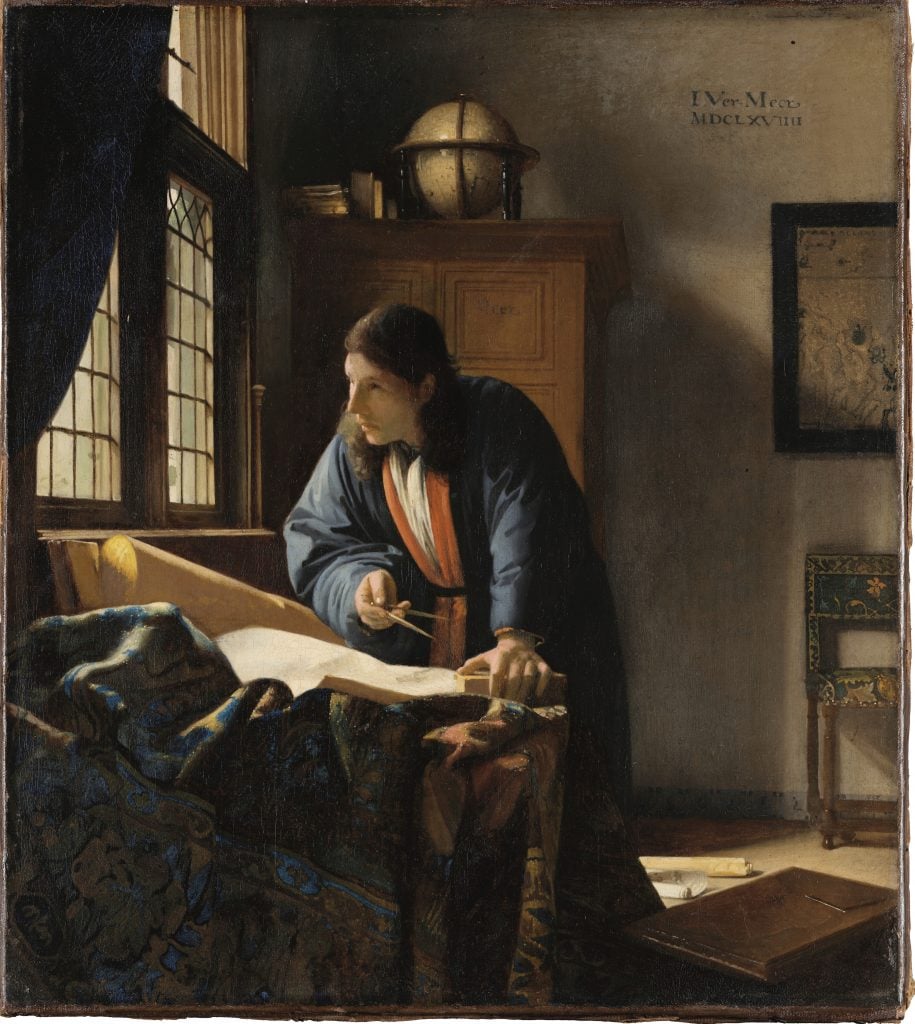
The Geographer, Johannes Vermeer, 1669, oil on canvas. Städel Museum, Frankfurt am Main
Reflecting on Vanity and Faith
This last section of the exhibition looks into the symbols presented in three particular paintings that may suggest Vermeer’s views of the world he lived in the, and the reflection of his inner struggles in relation to his faith and monetary values.
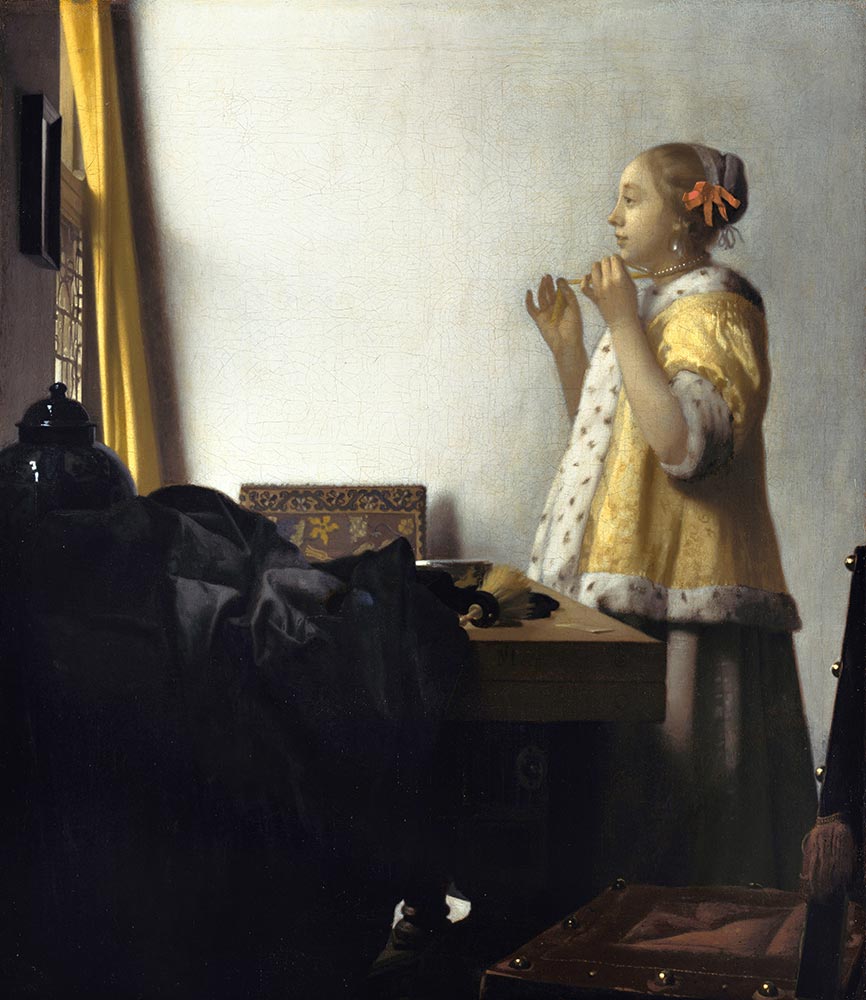
Woman with a Pearl Necklace, Johannes Vermeer, (c. 1662-64), oil on canvas. Staatliche Museen zu Berlin – Gemäldegalerie.
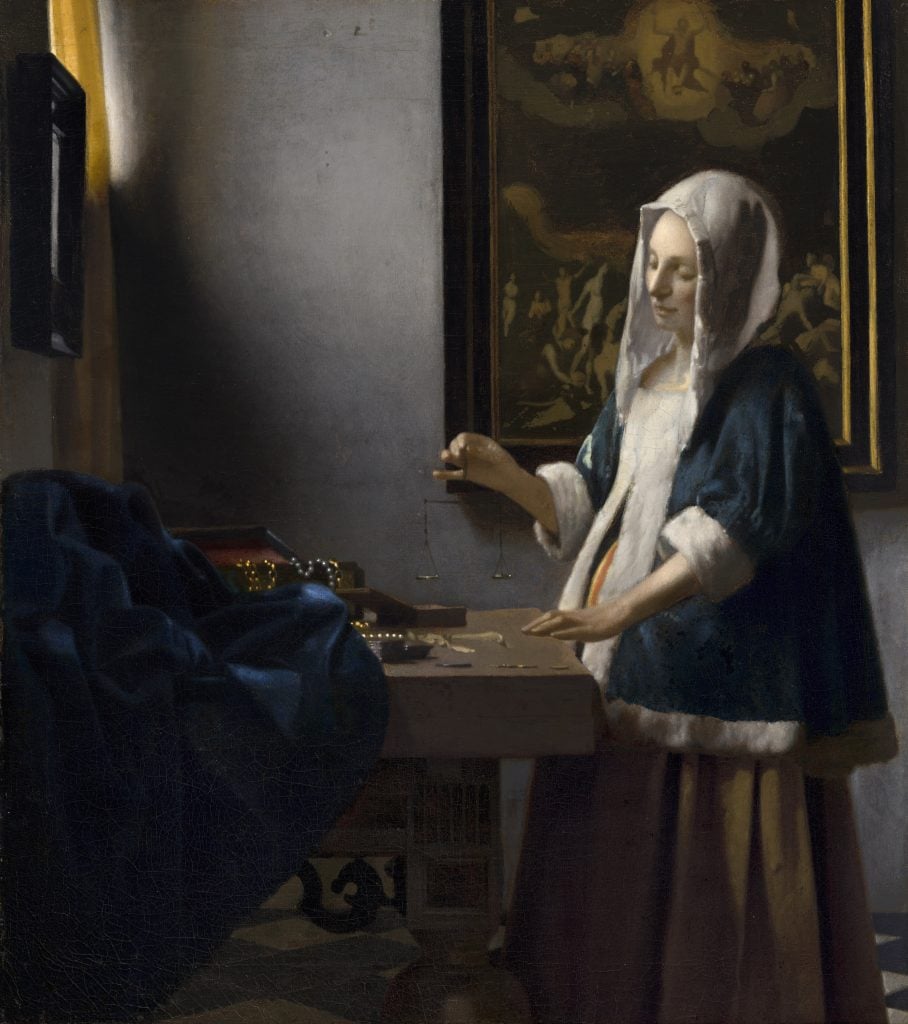
Woman Holding a Balance, Johannes Vermeer, c. 1662-64, oil on canvas. National Gallery of Art, Washington, Widener Collection
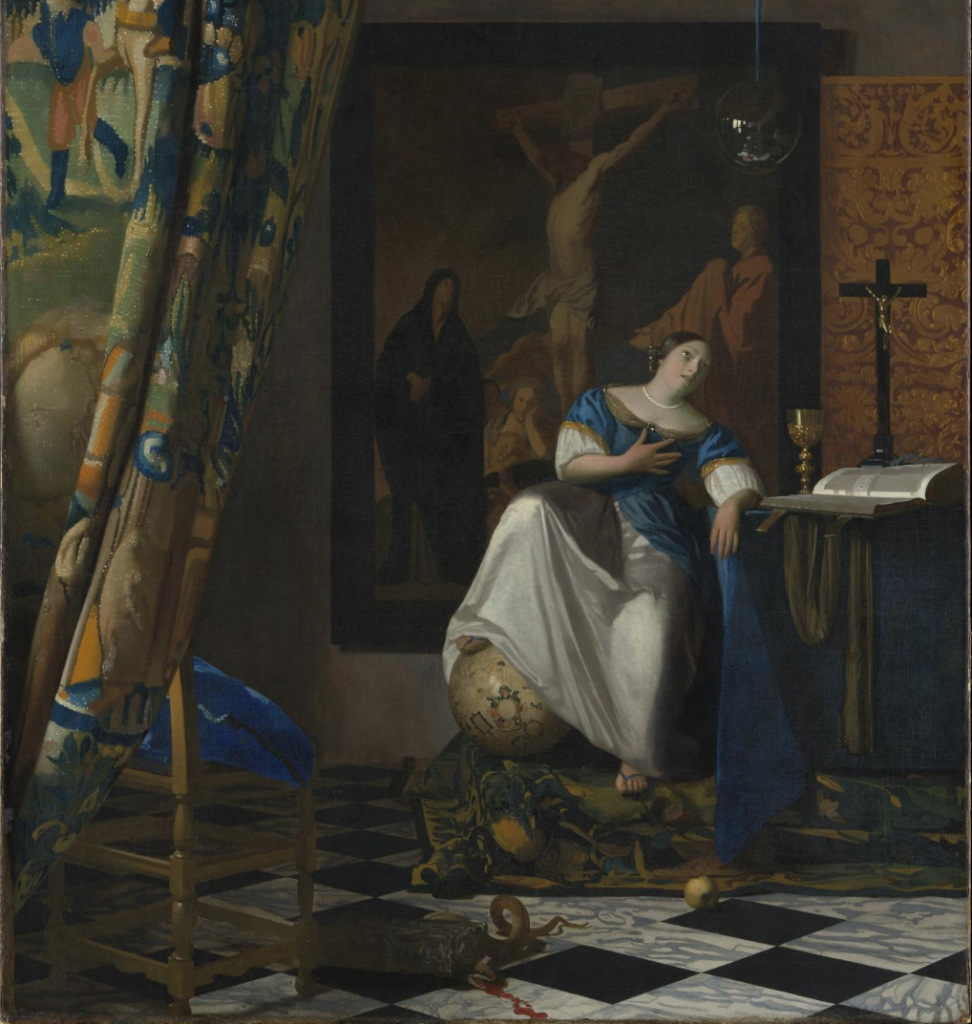
Allegory of Faith, Johannes Vermeer, ca. 1670-1674. Metropolitan Museum of Art, New York
Get the I Amsterdam City Card which includes free entry to The Rijksmuseum:

